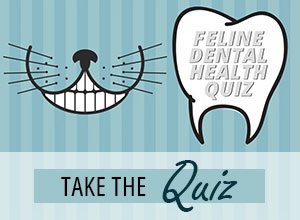What is Periodontal Disease?
Periodontal disease is considered the most prevalent disease in cats under the age of 10 years. The periodontia are the tissues that surround and support your cat’s teeth. In addition to the visible gums, it surrounds the largely “unseen” portions of the teeth which lie below the gum line. Periodontal disease begins when bacteria colonize a cat’s mouth and a plaque biofilm is formed. Over time, this biofilm mineralizes and calcifies into tartar. The resultant combination of tartar and bacterial colonization leads to inflammation and results in periodontal disease.
There are four stages of periodontal disease, with stage one being the most minimal and progressing through to stage four. Stage one is the only stage that is considered reversible, through the use of professional dental health care and home care, like tooth brushing. Additional factors such as misaligned teeth, other diseases that affect your cat’s whole body, and genetics may also contribute to disease.
Signs and Symptoms
Detection and assessment of periodontal disease can be subtle. Often there are not obvious signs of dental disease. Many cats with dental disease still eat without a noticeable change in appetite. Signs can include:
- Bad breath
- Dropping food or chewing only on one side of the mouth
- Facial swelling or draining wounds
- Bleeding or discharge from the mouth and nose
- Sneezing
- Pawing at the mouth
- Tooth grinding
- Discolored teeth
Your veterinarian will assess your cat’s teeth at their yearly checkup. If you are suspicious of your cat having dental disease, contact your veterinarian immediately to schedule an examination. Cats are great at hiding signs of pain which can be caused by dental disease. This is another important reason to bring in your cat for their routine veterinary checkup.
Management and Treatment
Dental evaluations by your veterinarian should happen within the first or second year of your cat’s life during their routine veterinary checkup. In addition to periodontal disease, cats can also develop other dental diseases, including feline odontoclastic resorptive lesions (FORLs or cavities), stomatitis (widespread inflammation of the mouth), and oral cancer.
Contributed by Dr. Lauren Demos, BVMS, HonsBSc


